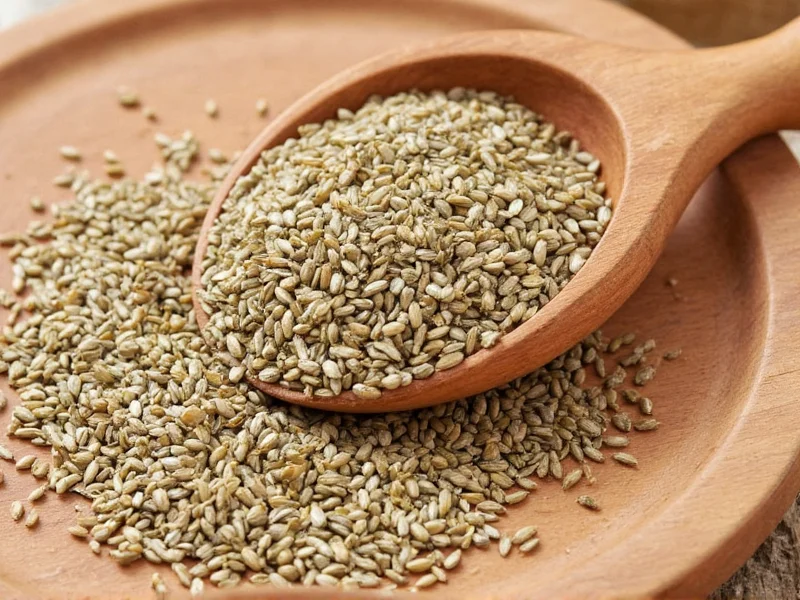Coriander seeds, the dried fruit of the cilantro plant, transform ordinary dishes with their warm, citrusy aroma and subtle spice. Unlike fresh cilantro leaves, these small round seeds deliver a completely different flavor profile that's essential in global cuisines from Indian curries to Scandinavian breads. Understanding proper preparation techniques unlocks their full potential while preserving nutritional benefits.
Mastering Coriander Seed Preparation
Proper preparation makes all the difference in flavor extraction. Whole coriander seeds maintain freshness for up to a year when stored in an airtight container away from light, while ground coriander loses potency within months. This explains why how to use coriander seeds properly begins with toasting and grinding them just before use.
Dry Roasting Technique
Place whole seeds in a dry skillet over medium heat. Shake frequently for 1-2 minutes until they release a citrusy aroma and darken slightly. Immediately transfer to a cool plate to prevent burning. This simple step enhances their natural oils and creates deeper flavor complexity for how to use coriander seeds in Indian cooking where they're foundational in garam masala and curry powders.
Grinding Methods Compared
| Method | Best For | Texture Result |
|---|---|---|
| Spice grinder | Consistent fine powder | Silky, uniform texture |
| Mortar and pestle | Small batches with control | Slightly coarse, aromatic |
| Coffee grinder | Quick processing | Fine but risk of oiliness |
Practical Culinary Applications
Knowing how to use coriander seeds in cooking expands your flavor possibilities significantly. Their versatility spans multiple cooking techniques and global cuisines.
Building Flavor Foundations
Add whole coriander seeds to oil at the beginning of cooking to infuse dishes with subtle flavor. This technique works exceptionally well in Indian dals and Middle Eastern rice dishes. For best ways to use coriander seeds in soups and stews, add them early in the cooking process to allow flavors to meld completely.
Marinades and Rubs
Combine freshly ground coriander with cumin, garlic, and lemon juice for a transformative meat marinade. The seeds' natural oils help carry flavors deep into proteins. For fish dishes, pair ground coriander with fennel and orange zest for a bright, complementary flavor profile that answers how to use coriander seeds for seafood.
Baking Applications
Don't overlook coriander seeds in baked goods. German rye breads traditionally include them, while Scandinavian pastries use them with cardamom. For modern applications, add 1 teaspoon of freshly ground coriander to apple pie filling or pumpkin bread batter for unexpected complexity that demonstrates how to use coriander seeds in baking.
Health-Focused Uses
Beyond culinary applications, coriander seeds offer documented digestive benefits. Their traditional use in Ayurvedic medicine as a carminative makes them valuable for addressing bloating and indigestion.
Coriander Seed Tea Preparation
Crush 1 teaspoon of seeds and steep in 8 ounces of boiling water for 10 minutes. Strain and drink after meals to support digestion. This simple preparation addresses common questions about coriander seeds benefits and uses for digestive health. For enhanced effects, combine with cumin and fennel seeds in equal proportions.
Traditional Remedies
In many cultures, soaked coriander seeds serve as natural remedies. Try this effective preparation: soak 2 tablespoons of seeds in water overnight, then strain and drink the infused water in the morning. This traditional approach answers how to use coriander seeds for digestion naturally without supplements.
Storage and Quality Tips
Maximize shelf life by storing whole coriander seeds in an airtight container away from heat and light. Properly stored, they maintain peak flavor for 12-18 months. Ground coriander loses potency within 3-6 months, which is why how to grind coriander seeds properly just before use makes such a significant difference in dish quality.
Identifying Fresh Seeds
Fresh coriander seeds should have a light tan color and emit a citrusy aroma when crushed. Dull, grayish seeds or those with little fragrance indicate age and diminished flavor—critical knowledge for anyone learning how to use coriander seeds effectively. Always purchase from reputable spice merchants who can verify harvest dates.
Common Mistakes to Avoid
Many home cooks make these critical errors when working with coriander seeds:
- Over-toasting: Seeds burn quickly, turning bitter within seconds after becoming fragrant
- Using pre-ground coriander: Loses 70% of volatile oils within weeks of grinding
- Incorrect measurements: 1 tablespoon whole seeds = 2½ teaspoons ground, not a 1:1 ratio
- Adding at wrong time: Whole seeds need time to infuse; ground works better added later
Global Culinary Traditions
Understanding traditional uses of coriander seeds across cultures enhances your cooking repertoire. In Indian cuisine, they form the base of curry powders and are essential in pickling. Mexican cooks use them in chorizo seasoning, while Eastern European bakers incorporate them into rye breads. This global perspective helps answer how to use coriander seeds in different cuisines authentically.
Coriander Seeds vs Powder: When to Use Which
Whole seeds provide subtle background notes when simmered in liquids, while ground coriander delivers immediate, pronounced flavor. For long-cooked dishes like stews, use whole seeds; for quick sauces and dressings, choose freshly ground. This distinction addresses frequent questions about coriander seeds vs powder applications.











 浙公网安备
33010002000092号
浙公网安备
33010002000092号 浙B2-20120091-4
浙B2-20120091-4